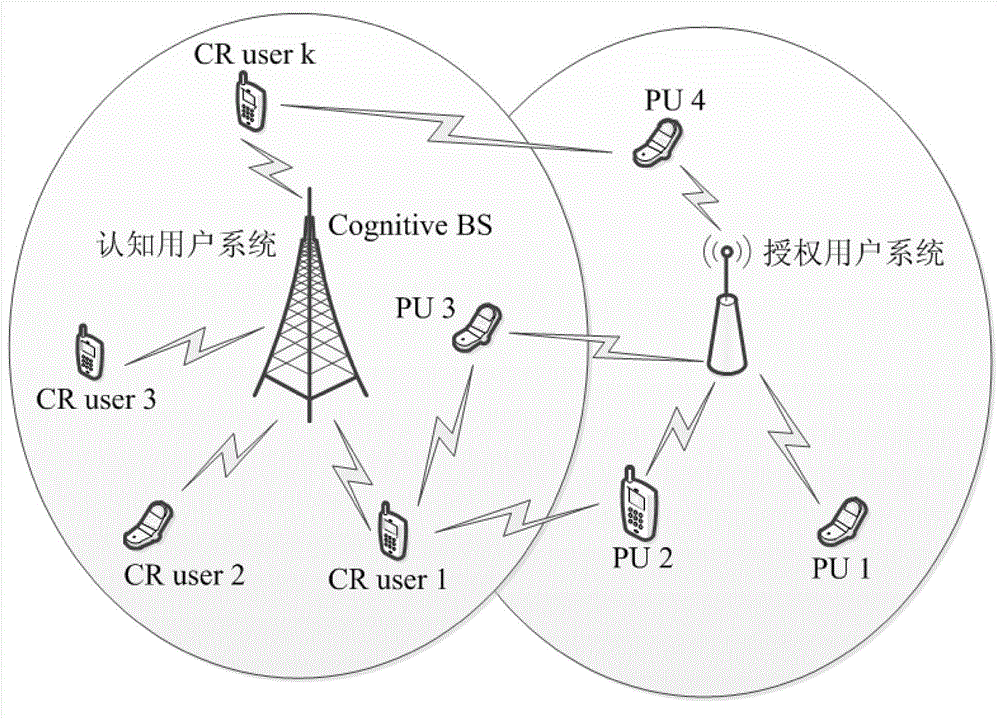Cognitive network downlink resource allocation method based on LTE (long term evolution)
A downlink and resource allocation technology, applied in the multiple use of transmission paths, digital transmission systems, electrical components, etc., can solve the problems of high computational complexity, less computational complexity, and fewer algorithms to achieve system capacity The effect of large, maximizing system capacity and low computational complexity
- Summary
- Abstract
- Description
- Claims
- Application Information
AI Technical Summary
Problems solved by technology
Method used
Image
Examples
Embodiment Construction
[0024] Below in conjunction with specific embodiment, further illustrate the present invention. It should be understood that these examples are only used to illustrate the present invention and are not intended to limit the scope of the present invention. In addition, it should be understood that after reading the teachings of the present invention, those skilled in the art can make various changes or modifications to the present invention, and these equivalent forms also fall within the scope defined by the appended claims of the present application.
[0025] figure 1 Shown is a scenario description for the coexistence of a cognitive system and an authorized user system. The cognitive system includes a cognitive base station and K=16 cognitive users. The base station is the main control node, which is responsible for collecting the spectrum sensing information of each cognitive user and the channel state information in the system, and then based on this, dynamic self-control...
PUM
 Login to View More
Login to View More Abstract
Description
Claims
Application Information
 Login to View More
Login to View More - R&D
- Intellectual Property
- Life Sciences
- Materials
- Tech Scout
- Unparalleled Data Quality
- Higher Quality Content
- 60% Fewer Hallucinations
Browse by: Latest US Patents, China's latest patents, Technical Efficacy Thesaurus, Application Domain, Technology Topic, Popular Technical Reports.
© 2025 PatSnap. All rights reserved.Legal|Privacy policy|Modern Slavery Act Transparency Statement|Sitemap|About US| Contact US: help@patsnap.com



